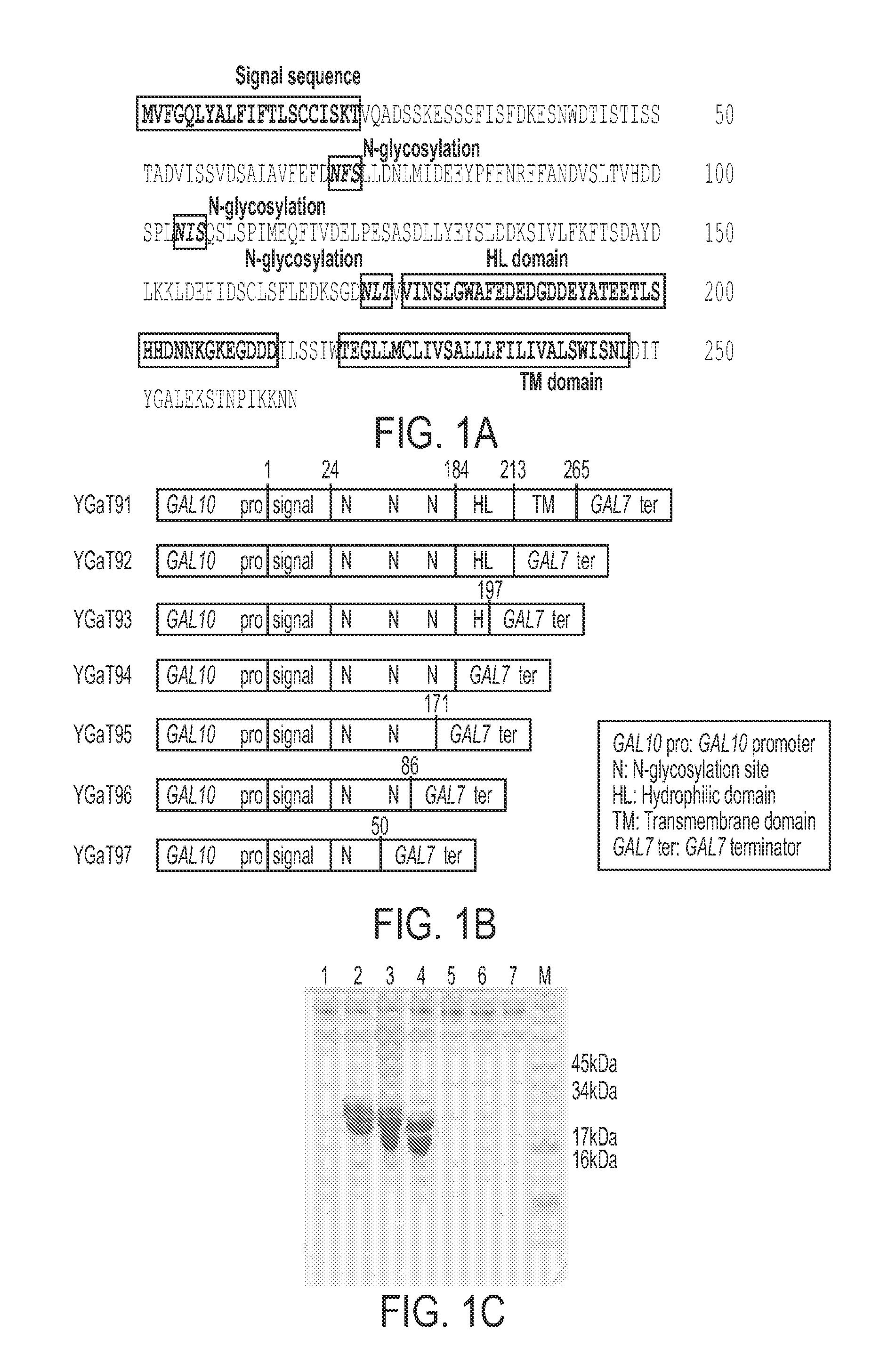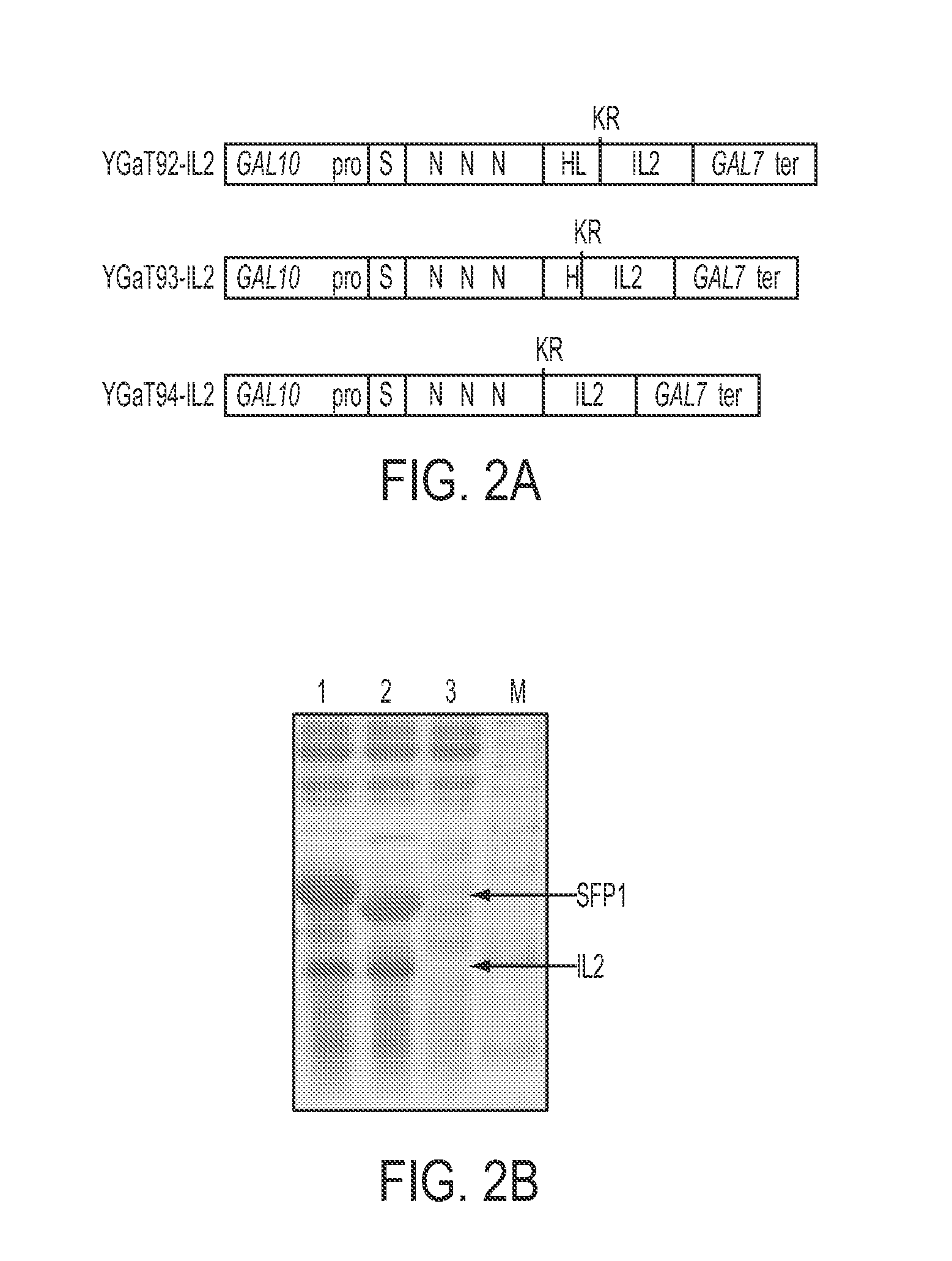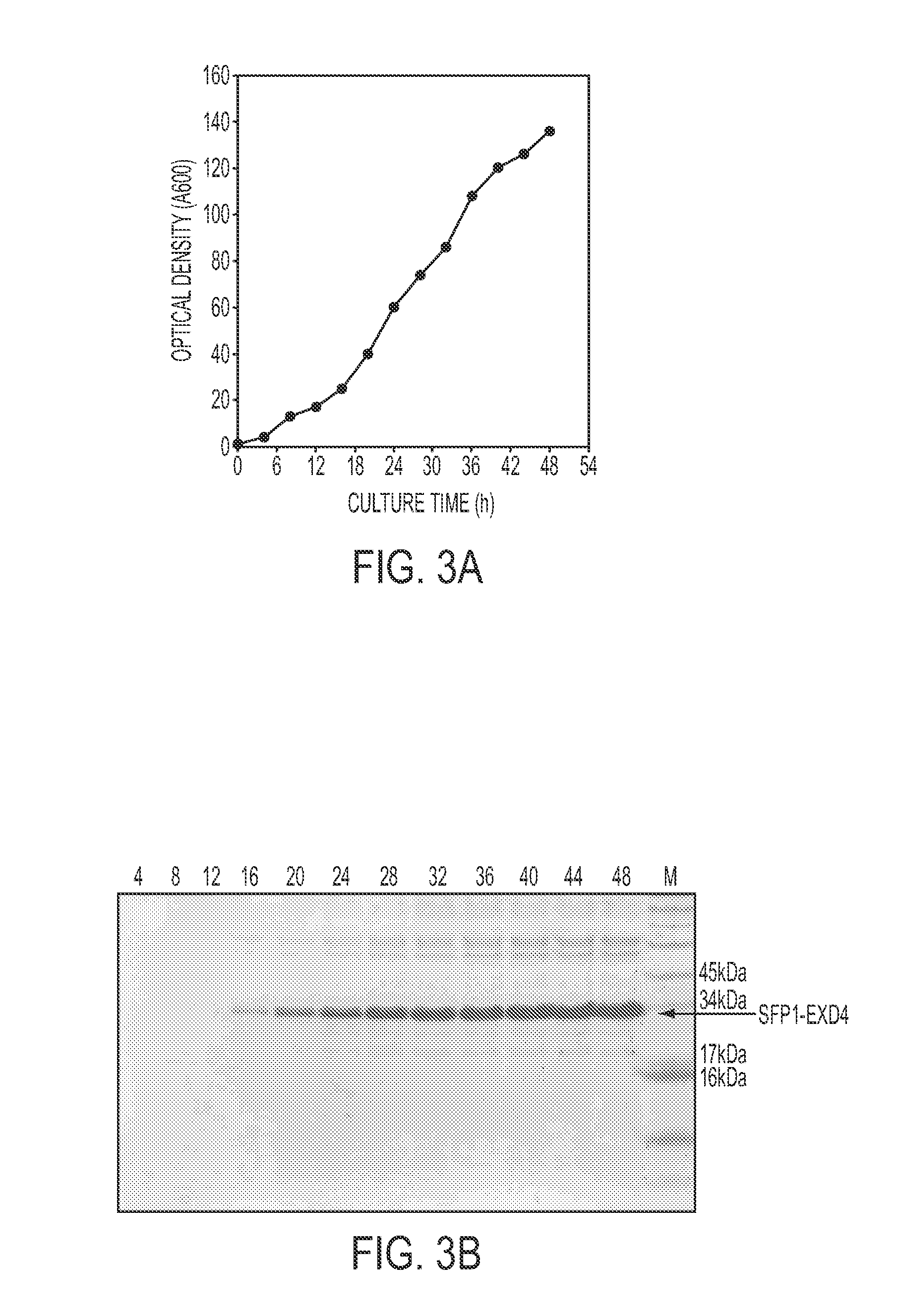Screening of Abundantly Secreted Proteins and Their Use as Fusion Partners for the Production of Recombinant Proteins
- Summary
- Abstract
- Description
- Claims
- Application Information
AI Technical Summary
Benefits of technology
Problems solved by technology
Method used
Image
Examples
example 1
Determination of optimal size of YGR106C gene for Extracellular Secretion
[0123]This example demonstrates the optimal regions of YGR106 that are needed for extracellular secretion. As shown in FIG. 1A, the YGR106C (hereafter Secretion Fusion Partner1, SFP1) protein (SEQ ID NO: 1) consists of 265 amino acid residues containing signal peptide, three glycosylation sites, one hydrophilic domain (HL) and one trans-membrane domain (TM).
[0124]Over-expression of intact YGR106C gene under the control of GAL10 promoter produced no YGR106C protein in culture medium. However, a truncated SFP1 (amino acids 1-213 of SEQ ID NO: 1) was highly secreted into the culture medium using a C-terminally truncated form of YGR106C under the control of yeast GAL10 promoter.
[0125]Further identification of the optimal domains of the SFP1 gene were determined for secretion. Several functional domains of SFP1 protein such as secretion signal (amino acids 1-19 of SEQ ID NO: 1), hydrophilic domain (HL) (amino acids ...
example 2
Determination of Optimal Size of SFP1 Gene as a Fusion Partner for Secretion of a Target Protein
[0134]This example demonstrates the use of SPF1 derivatives as fusion partners. In order to test SFP1 derivatives as fusion partners for the secretion of an exemplary target protein, human interleukin-2 (hIL-2), three vectors were constructed to express hIL-2 as fusion proteins with three SFP1 derivatives (SFP1-92 (SEQ ID NO: 39), SFP1-93 (SEQ ID NO: 40), and SFP1-94 (SEQ ID NO: 41)) of YGaT92, YGaT93 and YGaT94, respectively (FIG. 2A). A hIL-2 fusion with YGaT91 was also generated, SFP1-91 (SEQ ID NO: 38), data not shown. To fuse hIL2 gene with SFP1-92 of YGaT92, a partial SFP1 gene was amplified with a sense primer GAL100 (SEQ ID NO: 10) which recognize GAL10 promoter and an anti-sense primer H121 (SEQ ID NO: 11) from YGaT92 vector. To facilitate the fusion with hIL2 gene and to induce in vivo cleavage of the hIL2 fusion proteins by yeast dipeptidyl protease Kex2p (Mizuno K et al., Bioc...
example 3
Expression of Target Protein Fused with SFP1 Derivatives
[0137]The SFP1-92 (SEQ ID NO: 39) constructed in Example 2 from YGaT92 was used for the secretory production of Exendin-4 (EXD4), a 39 amino acids peptide analogue of glucagons-like peptide-1 (GLP1). For simple and efficient purification of intact EXD4 proteins, 6-Histidine tag and enterokinase cleavage site (DDDDK (SEQ ID NO: 79), D: aspartic acid, K: Lysine) were added to the C-terminus of SFP1. Therefore the fusion protein from N-terminus to C-terminus included a SFP1 fragment, a 6-Histidine tag, an enterokinase cleavage site and an EXD4 sequence. To construct YGaT92-EXD4 vector that expressed SFP1-92 EXD4 fusion protein, the SFP1-92 gene was amplified from YGaT92 vector with GAL100 primer (SEQ ID NO: 10) and anti-sense primer HDK-R (SEQ ID NO: 17) that recognize the HL sequence and contains 6 Histidine codons. The EXD4 gene was amplified with sense primer HDK-F (SEQ ID NO: 18) that contains 18 nucleotides complementary to H...
PUM
| Property | Measurement | Unit |
|---|---|---|
| Size | aaaaa | aaaaa |
| Hydrophilicity | aaaaa | aaaaa |
| Level | aaaaa | aaaaa |
Abstract
Description
Claims
Application Information
 Login to View More
Login to View More - R&D
- Intellectual Property
- Life Sciences
- Materials
- Tech Scout
- Unparalleled Data Quality
- Higher Quality Content
- 60% Fewer Hallucinations
Browse by: Latest US Patents, China's latest patents, Technical Efficacy Thesaurus, Application Domain, Technology Topic, Popular Technical Reports.
© 2025 PatSnap. All rights reserved.Legal|Privacy policy|Modern Slavery Act Transparency Statement|Sitemap|About US| Contact US: help@patsnap.com



